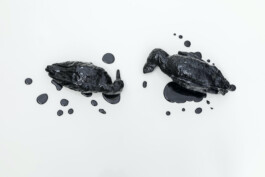
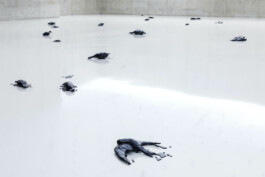
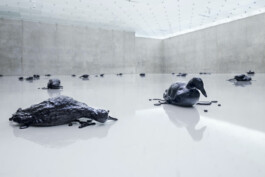
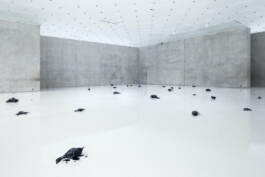
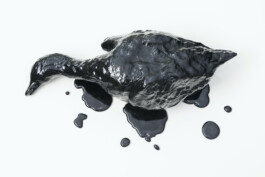
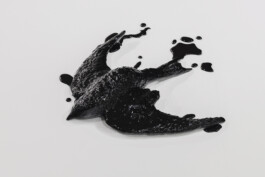
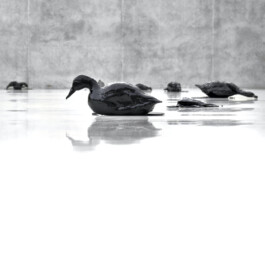
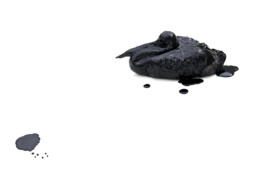
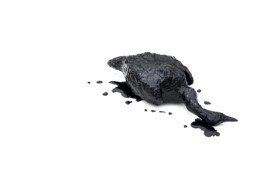
During the Gulf War in Kuwait (1990–91), the carcasses of birds, fish, livestock, and many other species regularly lined the coastline and deserts of the nation—the result of massive toxic clouds fed by hundreds of torched oil wells. It was and still is one of the worst man-made environmental disasters of all time. However, when images of these oil-drenched animals were disseminated abroad, many people believed them to be fake.
While studying in Japan, Monira Al Qadiri learned of such misconceptions when she was confronted with iconic war-time photographs of oil-covered birds that were presented during a class as being merely exercises in propaganda. Although a witness to the destruction herself, her lived experience was questioned, even distorted, under the influence of others. Through this work, the artist has attempted to breathe life back into her memories by recreating these birds as glass objects, making tangible the disaster she witnessed while simultaneously demonstrating the fragility of our memories when images move across time, space, and cultures.
Music by Sharif Sehnaoui.
Commissioned by Kunsthaus Bregenz, supported by König Galerie








During the Gulf War in Kuwait (1990–91), the carcasses of birds, fish, livestock, and many other species regularly lined the coastline and deserts of the nation—the result of massive toxic clouds fed by hundreds of torched oil wells. It was and still is one of the worst man-made environmental disasters of all time. However, when images of these oil-drenched animals were disseminated abroad, many people believed them to be fake.
While studying in Japan, Monira Al Qadiri learned of such misconceptions when she was confronted with iconic war-time photographs of oil-covered birds that were presented during a class as being merely exercises in propaganda. Although a witness to the destruction herself, her lived experience was questioned, even distorted, under the influence of others. Through this work, the artist has attempted to breathe life back into her memories by recreating these birds as glass objects, making tangible the disaster she witnessed while simultaneously demonstrating the fragility of our memories when images move across time, space, and cultures.
Music by Sharif Sehnaoui.
Commissioned by Kunsthaus Bregenz, supported by König Galerie